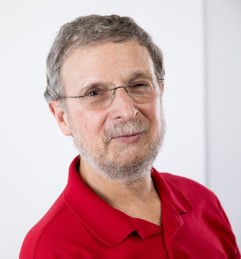Consumer Involvement




In 1990, Ed Harris, CEO of a successful software company, was diagnosed with CREST syndrome, a limited systemic scleroderma. At the time, the conventional means of treating patients was to simply wait for symptoms to occur and to address those symptoms. This approach left him feeling confused and frustrated. After 2 years of suffering with severe acid reflux that could not be controlled with medication, Raynaud’s syndrome causing him to feel chronically chilled, and reduced pulmonary function, he was losing hope.
After watching the movie Lorenzo’s Oil with his wife, Ed was inspired to take his treatment into his own hands. Taking advantage of his graduate-level clinical psychology training, his extensive computer skills, and the fact that his wife is a physician, he spent countless hours researching at the medical school library to understand the scleroderma disease process and explore treatments that physicians may not know about. His real breakthrough came after a chance meeting on a flight with a man he describes as “the one person in the country who was able to give me the tools I needed to do the research that led to my successful treatment,” the CEO of a company selling Medline®, a medical search catalog on CD Rom. After hearing Ed’s story, he offered to send him a free copy.
Compiling his research led Ed to believe that most, if not all, scleroderma symptoms could be explained by the long-term effects of abnormal red blood cell aggregation. He found promising results from a study that used Therapeutic Plasma Exchange (TPE) and decided to devise a TPE treatment plan for himself. He presented his plan to his physicians, and after getting them on board and convincing his insurance company to fund treatment, Ed began a TPE regimen. After 2 years of TPE treatment, Ed’s reflux was completely under control, he was no longer experiencing chills, and his lungs began to heal and eventually returned to the normal functional range. His case report was published in 2017.1
Using himself as a case study, Ed was convinced that the treatment was effective and he wanted to share all of the knowledge he had gained with others. He has published several patient education documents, including Scleroderma FAQ™2 and a number of technical articles. In 2014, Ed launched the Scleroderma Education Project,3 a website geared toward educating patients and clinicians on topics not covered on other websites. In 2016, the Scleroderma Education Project was recognized as a 501(c)(3) tax-exempt non-profit organization by the United States Internal Revenue Service (EIN: 81-1450999).
His desire to help others with scleroderma has not only led him to become an active patient support advocate, but also drove him to expand the mission of the Scleroderma Education Project and assemble a Research Advisory Board of experts in blood rheology, antibodies, TPE, and immunology to pursue his theory that the damage to the vascular system that causes symptoms of scleroderma may be a result of hyperaggregation of red blood cells. The team is comprised of volunteers, and research is funded through donations. Together, they have written and presented research posters at several medical conferences, in addition to publishing a major review paper on the use of TPE to treat scleroderma.4 Several patients are now receiving regular TPE treatments using the special protocol he and his team designed. The results of these individual patient trials will be published in a future case series.
The Congressionally Directed Medical Research Programs (CDMRP) relies on individuals like Ed to serve as reviewers in order to evaluate proposed research from the point of view of a consumer. His unique background provided him the vast knowledge and expertise in scleroderma to participate in consumer and scientific review of scleroderma research applications for the CDMRP Peer Review Medical Research Program in 2019. Ed also participated in the Stakeholders meeting held in April 2020 to help shape the new CDMRP Scleroderma Research Program. When asked about his experience, Ed commented “…having knowledgeable consumer reviewers adds a critical dimension to evaluation of grant applications… The input of consumer reviewers is critical in making sure that any funded research has the potential to show tangible benefit to scleroderma patients in a relatively short time period.”
Today, Ed continues his self-designed TPE treatments with the only remaining scleroderma symptom being mild Raynaud’s syndrome. He enjoys playing tennis, cooking, and playing bassoon in two community orchestras. While Ed attributes his success in overcoming his limited systemic scleroderma to thinking “outside the box” and considering ideas that go against normal paradigms, his fellow Scleroderma Education Project board member, Dr. Barry Farkas, reminded him that “your advantage is that you were never in the box in the first place.”
Links:
2 https://sclerodermainfo.org/faq/
3 https://sclerodermainfo.org/
Publications:
1 Harris E, Meiselman H, Moriarty P, et al. 2017. Successful long-term (22 Year) treatment of limited scleroderma using therapeutic plasma exchange: Is blood rheology the key? Clin Hemorheol Microcirc 65(2):131-136.
4 Harris E, Meiselman H, Moriarty P, et al. 2018. Therapeutic plasma exchange for the treatment of systemic sclerosis: A comprehensive review and analysis. J Scleroderma Relat Disord 3(2):132-152.
Last updated Thursday, December 5, 2024














